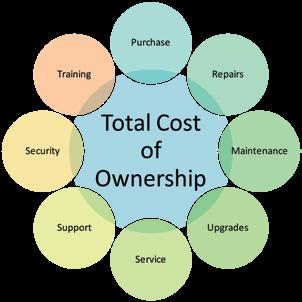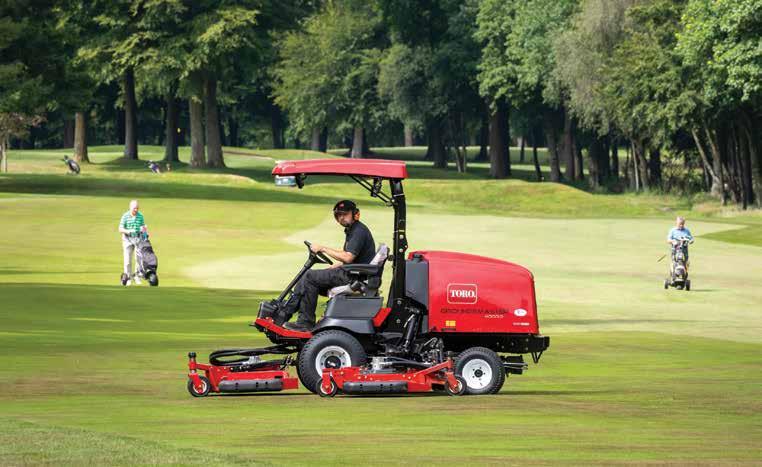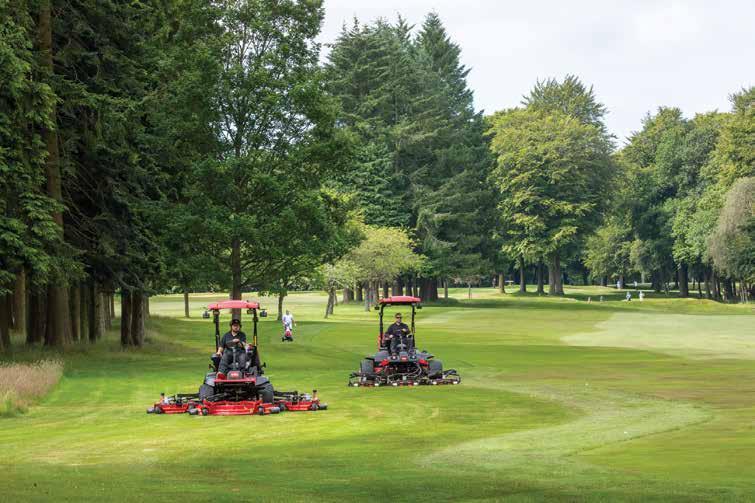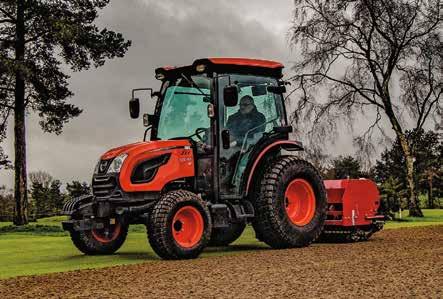
4 minute read
2023 quality over quantity
24.7 million rounds of golf were played in 2022 – that’s 11.2 million more than 2019 pre-Covid levels and the data shows that the average number of members per club, and how often members are playing, have increased significantly.*
But as we all know, 2023 is certainly not without its issues. Here, Jon Cole, divisional business manager - turfcare at Reesink Turfcare, distributor of Toro fine turf, sports and grounds equipment, considers the climate and the change in purchasing decisions.
Our order books reflect the stats – it’s been a buoyant time – and while this is fantastic news, one thing we and many machinery distributors are still facing is a supply shortage. This is the proverbial elephant in the room, but really shouldn’t be. I’ll explain why.
The new face of golf
After golf enjoyed a pandemic-fuelled resurgence in 2020, the question was whether that momentum could be sustained, and the answer has been a consistent yes.
Figures from 2022 show the professional game thrives as evidenced by the PGA Tour’s $427 million in tournament purses – an average jump of almost 14 percent per event, thanks in part to the debut of a new television rights deal – and the LPGA’s 12 percent prize money increase to almost $86 million.
Perhaps of broader importance is the health of the game – official figures from the four UK and Ireland golf unions have revealed that participation in 2022 was the second highest since recording began showing, and that 5.6 million adults played at least one nine- or 18hole round of golf in Great Britain and Ireland in 2022. That was an increase of 265,000 from 2021, making it the second-highest number since monitoring began over 30 years ago*.
The demographic of golf has changed too.
The continued flexibility in work schedules and a renewed appreciation for the physical and mental escape that golf provides sees a much more rounded audience of men and women,
Consider the whole life cycle, not simply the purchase price

with the figures showing that 20 percent of adult golfers on full-length courses were female in 2022, compared to 15 percent in 2019*.

So, what does this mean? Well, it makes great sense with the state of the game in the healthy position it is, that as we came out of the pandemic, clubs started investing again and placing machinery orders in abundance, but, as we know more than ever now – supply doesn’t always meet demand.
Supply chain issues
We’ve found global supply and production networks are still working to catch up with the backlog from lockdown and the high ‘recovery’ demand. The ongoing delay in raw material
Healthy Position
A promising sign from America is that 6.2 million millennials, or 28 percent of all golfers, played about 100 million rounds in 2022, further broadening the audience.
Source: National Golf Foundation supplies and disruption to global transportation routes in general was expected to ease by now, but these pressures have in fact increased, exacerbating this industry-wide and global issue. Worldwide issues beyond anyone’s control have had a contributory factor to sourcing the necessary components to complete a machine for production. Most customers are fully converse with this now and planning their machinery replacements accordingly. Far more proactively than possibly historically.
Rising energy prices
Unfortunately, there’s another fly in the ointment as it were and it’s inclusive to all –rising energy prices.
Electricity prices in the UK rose by 66.7 percent and gas prices by 129.4 percent in the 12 months to February 2023** and were some of the main drivers of the annual inflation rate. We’ve heard the same problems from golf clubs running a spa or leisure facilities, to local sports clubs – there’s just less money to go around once the bills have been paid.
Every penny counts
We’re finding there’s a correlating change in our customers’ purchasing habits. Previously, customers would replace their machines every five years using finance. Now, we see them extending that lease time frame to six or even seven years. There are several reasons for this. They’ve seen, by a force of hand, that due to the build quality of Toro equipment, they can easily get another year or two out of their machines before selling them on.
So, with every penny counting now more than ever, what are the ways to maximise budget and make monthly savings? Well, one way is to adjust the length of lease. Most customers buy their machines on a lease deal. This is economical and means they can buy more of what they need for less, turning one new Toro machine into a fleet in a cost-effective way. And what we’re seeing is some customers extending the length of their machinery repayment leases to assuage the supply chain issues until they settle (which is expected to last through 2023-2024).

We’ve often spoken about how important the Total Cost of Ownership (TCO) of Toro machinery is – how the lowest TCO is achieved through the purchase of productive, good quality equipment, made with the most robust materials, using tried and tested technology. All of that is then supported by a preventative maintenance and repair regime provided by us, the distributor, to protect the machines’ longevity, performance, durability and reliability, as proven by Toro customers time and again.

Purchasing behaviour in 2023
A recent article in Forbes predicts purchasing behaviour will change in 2023 and place much greater importance on which brands and experiences are favoured than ever before, with the goal to squeeze maximum value out of each outlay. It will be the year of quality over
Positives
If there is a positive to be taken from the past two years for Toro equipment, we have proven that the machinery will last longer with fewer operating costs, reliability issues and with a lower depreciation of value than all its competitors.











